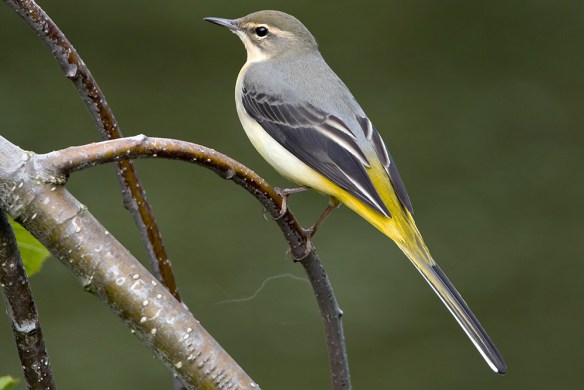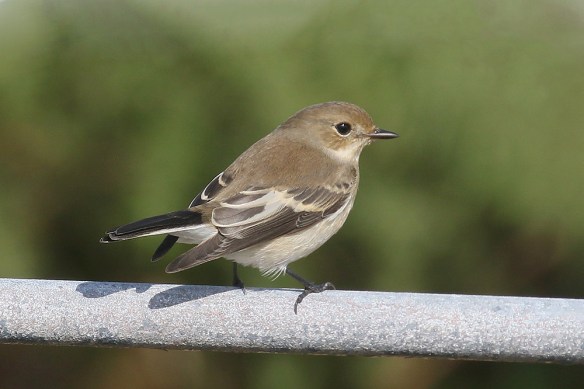 Bird populations in the U.K. continue to freefall as the government moves further away from achieving its own targets to protect nature
Bird populations in the U.K. continue to freefall as the government moves further away from achieving its own targets to protect nature
From RareBirdAlert
Between 2015 and 2020 almost half of all bird species declined, with woodland bird species being the most affected. UK bird populations have steadily declined over the past 50 years.
New data released by the UK government reveals that 48% of bird species have shown a decrease in just five years between 2015 and 2020. Birds such as the turtle dove, capercaillie, tree sparrow and grey partridge are now less than a tenth of their numbers from 50 years ago.
Campaigners say the government is in danger of missing out on their own targets set out in the Environment Act, which was passed into law in 2021 and requires a halt in species decline by 2030.
This week, the RSPB also released the results of their annual garden wildlife survey, the Big Garden Birdwatch.
It found that house sparrows were the most spotted bird for the twentieth year running, but since the survey began in 1979, almost 60% have been lost from UK gardens. Over the last 57 years it is thought that nearly 22 million house sparrows are believed to have disappeared from the country.
In response to the survey results, Beccy Speight, RSPB’s chief executive, says, “The numbers speak for themselves when it comes to the startling declines of some of our once common birds.”
“They no longer have the abundance across the UK that they used to have. We are in a nature and climate emergency and we’ve lost 38 million birds from our skies in the last 50 years.”
Why are UK birds declining?
According to wildlife experts, habitat loss, mainly driven by changes in agriculture, is considered one of the biggest drivers of UK bird decline.
This has resulted in farmland birds suffering the worst declines over the past 50 years, which peaked in the late 1970s and 1980s. This was largely due to the rapid changes in farmland management during the 1950s and 1960s.
The loss of mixed farming means less diversity of plants and animals and therefore fewer opportunities for birds to forage in different habitats throughout the year. A decrease in spring crops has resulted in less habitat for ground nesting birds such as lapwing, skylark, yellow wagtail and corn bunting.
Increased pesticide use has also led to the loss of weeds and insects as a food source, and the increased destruction of hedgerows further reduces the amount of suitable habitat.
But in the short term, woodland birds have suffered the biggest impact with 59% of species declining between 2015 and 2020. Some potential causes are a lack of woodland management and pressures from increased deer browsing, reducing the availability of suitable nesting and foraging habitats.
Bird populations are considered a good indication of the broader state of wildlife in the UK. This is because they are a well-studied taxonomic group that occupies a wide range of habitats and responds to environmental pressures that also impact other wildlife groups.
Dr. Richard Gregory, the RSPB’s head of science, says, “Everyone should be concerned that UK bird populations are continuing to decline as this is a crucial indicator of the condition of our environment and health of our natural world.”
“We cannot keep publishing report after report charting the decline of the UK’s wildlife without UK governments delivering on their commitments to take urgent action to restore nature and halt wildlife decline.”
Researchers have developed a tool that estimates the percentage of natural biodiversity that remains across the world and in individual countries.
It revealed that centuries of farming and industry have made the UK is one of the most nature-depleted countries in Europe. When compared to the G7 countries, the UK is at the very bottom in terms of how much biodiversity still survives.
“We are in a nature and climate emergency, and we need urgent action to keep common species common and save those already on the brink of being lost,” says Richard.
“This is not something on the distant horizon, but on our doorsteps but we can change this if we begin to seriously address the drivers of wildlife decline in the UK.”
Is it all bad news for the UK’s birds?
While many of the findings are a cause for concern, the report also highlights some positive trends in bird populations.
Although almost half of all species declined between 2015-2020, 24% increased during this time. In addition, some species have increased dramatically since 1970, including the Cetti’s warbler, blackcap, common buzzard, great spotted woodpecker, red kite and collared dove.
Positive conservation actions in the past 50 years have helped to drive the recovery of some of the UK’s birds.
For example, red kites were almost hunted to extinction in the UK, but an intense pioneering reintroduction programme which began in the 1980s has led to their almost miraculous recovery.
Despite there being some reasons to celebrate, pressure is building on the UK government to act if they want to achieve their targets of halting species loss entirely by 2030.
Richard Benwell, the CEO of Wildlife and Countryside Link, says, “As political parties turn their sights to the general election, they would do well to heed the warning written into today’s wild bird statistics. The decline of nature has continued, relentless and unabated, for decades.”
“Meeting the legally binding target to stop wildlife losses by the end of the next parliament can’t be achieved with a legal tweak here, some spare change there. Serious, sustained investment, proper penalties for pollution, and action in every sphere of government must be the hallmarks of any nature-positive manifesto.”
Read Wild bird populations in the UK, 1970 to 2021 here


























